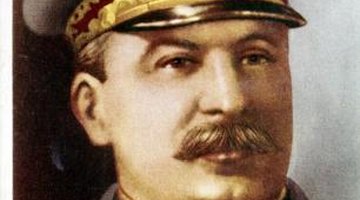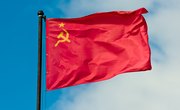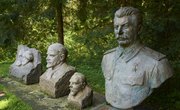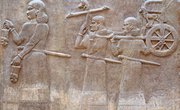Joseph Stalin was exposed to the writings of Karl Marx as a teenager while studying at seminary in Tbilisi. He became a supporter of Vladimir Lenin and the Bolshevik faction of the Communist Party. After the Bolsheviks seized power in 1917, Lenin appointed Stalin to a series of increasingly important government positions.
Stalin's Rise to Power
In 1922, Lenin named Stalin Secretary of the Communist Party's Central Committee. At the time, the post was not see as especially powerful, but it gave Stalin control over Communist Party appointments. Stalin used this authority to place allies in key positions. When Lenin died in 1924, Stalin was able to use the leverage he had built up within the Communist Party to outmaneuver Lenin's presumptive successor, Leon Trotsky, and rise to the leadership of the Communist Party of the Soviet Union.
The Great Terror
The Bolsheviks had already departed from many of the democratic principles outlined in Marxist communism under Lenin, but Stalin upped the ante by ruthlessly eliminated political rivals. At first he exiled opponents. In the 1930s, Stalin subjected dissenters and those he perceived as threats to public trials and had them executed as "enemies of the people." These alleged enemies included founders of the Soviet Union, intellectuals, those who opposed his reforms, military leaders who suggested to him that Adolf Hitler would not honor their 1939 treaty plus anyone else who dared to cross Stalin. Millions were killed or sent to slave labor in gulags during the 1930s, which became known as the "Great Terror" in Russia.
Related Articles
References
Writer Bio
Dell Markey is a full-time journalist. When he isn't writing business spotlights for local community papers, he writes and has owned and operated a small business.











